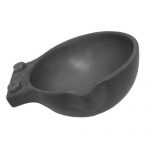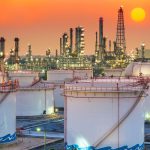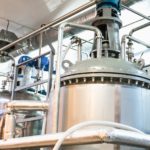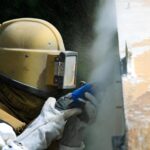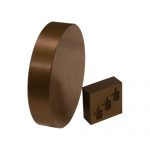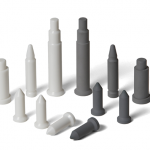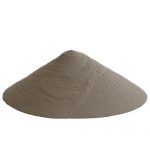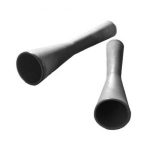Advanced sialon ceramics are engineered for numerous high-temperature applications, competing with established technical ceramics and refractory materials with their high strength and durability characteristics. These mechanical attributes are accompanied by outstanding thermal shock resistance, providing supreme physical stability under various thermodynamic conditions.
Continue readingInternational Syalons Recruit Quality, Health & Safety Engineer

The Board are pleased to announce that, thanks the continued growth of the Company, International Syalons have appointed a new Quality, Health & Safety Engineer. Mark Earle has been with the Company for several months, and is making excellent progress.
Mark has joined the Company with a wealth of quality assurance experience from within the automotive industry, and is looking to transfer his knowledge and introduce additional procedures and working practices to further improve the quality of our products in line with our ISO 9001:2015 accreditation, and ensure the Company maintains its excellent health and safety record.
Benefits of Using Corrosion-Resistant Sialons for Oil & Gas Applications
The depletion of existing hydrocarbon supplies and reserves is well-documented, with the oil and gas industry becoming increasingly circumspect in its attempts to meet a growing demand with a dwindling supply. Petroleum geology and natural gas exploration has transformed in recent years, augmenting traditional prospecting methodologies with new and emerging technologies. Fracking enables oil and gas suppliers to withdraw hydrocarbons dispersed in the strata of the earth’s crust, but this methodology is divisive from an ethical and environmental perspective.
Continue readingCareers at International Syalons
As a result of the ongoing growth of the company, International Syalons has a number of open job vacancies. Take a look at our careers page for a list of currently available positions.Continue reading
Sialon Materials: Outlining the Advantages of Syalon 050
Sialons are advanced technical ceramics based on silicon nitride (Si3N4). They retain the thermodynamic stability and exceptional toughness properties of silicon nitride due to their isostructural composition, but feature larger cell dimensions for the formation of high-density refractory components. This excellent molecular density enables outstanding resistance from severe corrosion and mechanical degradation, which are commonplace in industrial manufacturing environments. Sialons are therefore routinely used for the fabrication of wear components and thermally stable barriers for heat sensitive elements. Cutting tools, grinding media, and thermocouple protection sheaths are all commonly produced using materials from the sialon group.
Continue readingCritical Advantages of Ceramic Shot Blast Nozzles
The demanding specifications of shot blasting equipment require high-performance materials capable of withstanding sustained pressures and temperatures. Conventional metals with outstanding hardness values are routinely used to prepare tough shot blast nozzle linings, but they are incapable of competing with the unique mechanical stability of advanced ceramics like silicon nitride.
This article will explore the capacities of advanced ceramic shot blast nozzles in more detail:
Continue readingThe Benefits of Electrically Conductive Silicon Nitride
Silicon nitride is one of the most advanced ceramic materials currently manufactured, providing outstanding hardness levels that are rarely matched by conventionally-manufactured components. Most silicon nitride products are electrically insulating, which provides certain industrial benefits for mechanical applications – but it can present difficulties when it comes to machining the material. Material profiling of ultra-hard insulators can result in a significant loss to its desirable properties, and commonly depends upon expensive procedures such as diamond grinding. Meanwhile, electrically conductive materials can be efficiently profiled through electro-discharge machining (EDM) with no loss to material hardness.
Continue readingWhat are Weld Location Pins?
Weld location pins, or control pins, are hard-wearing and heat-resistant components that are used to precisely locate a material on one or more dimensional planes. Once fixed into position, the material can be accurately welded and, if necessary, moved along pre-determined axes for machining processes with high degrees of precision. This method is primarily used to weld captive nuts to sheet metal or body panels, for manufacturing parts that are used in various automotive and construction sectors.
Continue readingPressure Sintering
Sintering is a process by which a powder compact, or ‘green-body’, is transformed into a dense ceramic article which offers the desired characteristics and material properties. The process can enhance the materials mechanical and high-temperature properties, as well as the electrical conductivity, translucency, or thermal conductivity.
Sialon Shot Blast Nozzles for Industrial Wear Applications
Update: Originally posted in 2018, this blog was updated with new context on 29/04/2024.
Industrial wear applications create exacting conditions for equipment and components due to the inherent abrasiveness, corrosiveness, or high temperature and oxidation resistance damages associated with these specific processes. Sandblasting, for example, is a surface preparation method that blows abrasive grit through shot blast nozzles at high velocities to change the surface texture or roughness of an object. This grit, comprised of tough substances such as cast iron or chill-cast iron, has the capacity to erode the interior components of the abrasive blaster – particularly at the outlet. Shot blast nozzles and their liners must, therefore be composed of high-strength materials capable of withstanding long-term abrasive conditions from high concentrations of small particle erosive elements.
Continue reading
